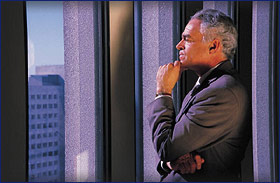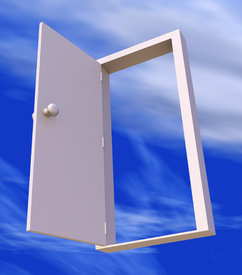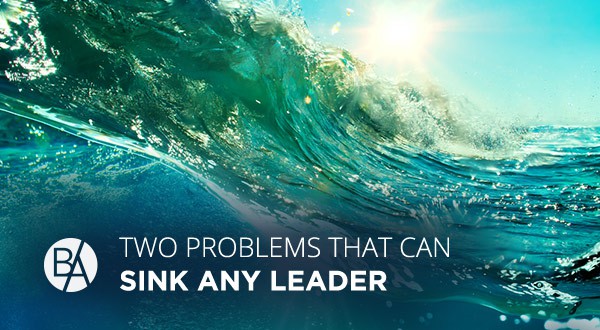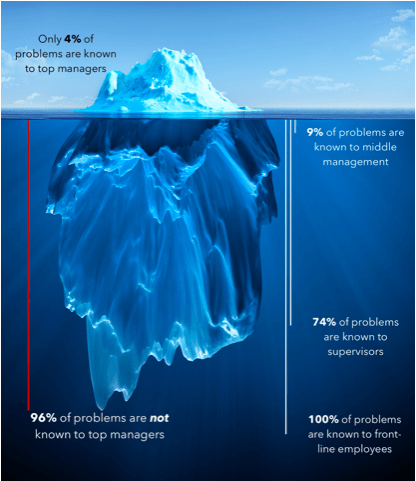The Heart of Innovation: 50 Awesome Quotes on Vision
November 18, 201050 Awesome Quotes on Vision

1. "If you can dream it, you can do it." - Walt Disney
2. "Whatever you can do or dream you can, begin it. Boldness has genius, and magic and power in it. Begin it now." - Goethe
3. "The greatest danger for most of us is not that our aim is too high and we miss it, but that it is too low and we reach it." - Michelangelo
4. "It's not enough to be busy, so are the ants. The question is, what are we busy about?" - Henry David Thoreau
5. "You don't lead by pointing and telling people some place to go. You lead by going to that place and making a case." - Ken Kesey
6. "Your vision will become clear only when you look into your heart. Who looks outside, dreams. Who looks inside awakens." - Carl Jung
7. "The empires of the future are empires of the mind." - Winston Churchill
8. "If you want to build a ship, don't herd people together to collect wood and don't assign them tasks and work, but rather teach them to long for the endless immensity of the sea." - Antoine de Saint-Exupery
9. "Vision is the art of seeing things invisible." - Jonathan Swift

10. "Management has a lot to do with answers. Leadership is a function of questions. And the first question for a leader always is: 'Who do we intend to be?' Not 'What are we going to do?' but 'Who do we intend to be?' - Max DePree
11. "Vision without action is a daydream. Action with without vision is a nightmare." - Japanese Proverb
12. "The best way to predict the future is to create it." - Alan Kay
13."Where there is no vision the people perish." - Proverbs 29:18
14. "Vision without execution is hallucination." - Thomas Edison
15. "Leadership is the capacity to translate vision into reality." - Warren Bennis
16. "If you limit your choices only to what seems possible or reasonable, you disconnect yourself from what you truly want, and all that is left is a compromise." - Robert Fritz
17. "Create your future from your future, not your past." - Werner Erhard
18. "To the person who does not know where he wants to go there is no favorable wind." - Seneca
19. "You've got to think about big things while you're doing small things, so that all the small things go in the right direction." - Alvin Toffler
20. "To accomplish great things we must dream as well as act.: - Anatole France
21. "A possibility is a hint from God. One must follow it." - Soren Kierkegaard
22. "A leader's role is to raise people's aspirations for what they can become and to release their energies so they will try to get there." - David Gergen

23. "The very essence of leadership is that you have a vision. It's got to be a vision you articulate clearly and forcefully on every occasion. You can't blow an uncertain trumpet." - Theodore Hesburgh
24. "Determine that the thing can and shall be done and then we shall find the way." - Abraham Lincoln
25. "Dreams are extremely important. You can't do it unless you can imagine it." -George Lucas
26. "Cherish your visions and your dreams as they are the children of your soul, the blueprints of your ultimate achievements." - Napoleon Hill
27. "Pain pushes until vision pulls." - Michael Beckwith
28. "Vision animates, inspires, transforms purpose into action." - Warren Bennis
29. "The master of the art of living makes little distinction between his work and his play, his labor and his leisure, his mind and his body, his education and his recreation, his love and his religion. He hardly knows which is which; he simply pursues his vision of excellence in whatever he does, leaving others to decide whether he is working or playing. To him he is always doing both." - Buddha
30. "Rowing harder doesn't help if the boat is headed in the wrong direction." - Kenichi Ohmae

31. "It's not what the vision is, it's what the vision does." - Peter Senge
32. "In the business world, the rearview mirror is always clearer than the windshield." - Warren Buffett
33. "A leader will find it difficult to articulate a coherent vision unless it expresses his core values, his basic identity. One must first embark on the formidable journey of self-discovery in order to create a vision with authentic soul." - Mihaly Csikszentmihalyi
34. "The best vision is insight." - Malcolm Forbes
35. "You have to know what you want. And if it seems to take you off the track, don't hold back, because perhaps that is instinctively where you want to be. And if you hold back and try to be always where you have been before, you will go dry." - Gertrude Stein
36. "The gift of fantasy has meant more to me than my talent for absorbing positive knowledge." - Albert Einstein
37. "I try to learn from the past, but I plan for the future by focusing exclusively on the present. That's were the fun is." - Donald Trump
38. "Every man takes the limits of his own field of vision for the limits of the world." - Arthur Schopenhauer
39. "People only see what they are prepared to see." - Ralph Waldo Emerson
40. "The most pathetic person in the world is someone who has sight, but has no vision." - Helen Keller
41. "Good business leaders create a vision, articulate the vision, passionately own the vision, and relentlessly drive it to completion." - Jack Welsh
42. "A vision is not just a picture of what could be; it is an appeal to our better selves, a call to become something more." - Rosabeth Moss Kanter
43. "If I have seen farther than others, it is because I was standing on the shoulders of giants." - Isaac Newton

44. "The future belongs to those who see possibilities before they become obvious." - John Scully
45. "If one advances confidently in the direction of his dreams, and endeavors to live the life which he has imagined, he will meet with success unexpected in common hours." - Henry David Thoreau
46. "Keep your eyes on the stars and your feet on the ground." - Franklin D. Roosevelt
47. "Looking up gives light, although at first it makes you dizzy." - Rumi
48. "You cannot depend on your eyes when your imagination is out of focus." - Mark Twain
49. "In order to be a realist, you must believe in miracles." - - David Ben-Gurion
50. "The real voyage of discovery consists of not in seeking new landscapes but in having new eyes." - Marcel Proust
Big thanks to Val Vadeboncoeur for locating most of these quotes.
Posted by Mitch Ditkoff at November 18, 2010 02:34 PM
Quote I've always liked in this regard is...
"One day Alice came to a fork in the road and saw a Cheshire cat in a tree. "Which road do I take?" she asked. "Where do you want to go?" was his response. "I don't know," Alice answered. "Then," said the cat, "it doesn't matter."
- Lewis Carroll
Posted by: Alan Kerr at November 18, 2010 06:30 AM
I like what Senge says about vision: "Visions are exhilarating. They create the spark, the excitement that lifts an organization out of the mundane."
Dr. Lynn K. Jones, Certified Personal and Executive Coach
www.lynnkjones.com
Posted by: Lkjonesdsw at November 18, 2010 01:36 PM
29. "The master of the art of living makes little distinction between his work and his play, his labor and his leisure, his mind and his body, his education and his recreation, his love and his religion. He hardly knows which is which; he simply pursues his vision of excellence in whatever he does, leaving others to decide whether he is working or playing. To him he is always doing both." - Buddha
For sure!
Posted by: Joyce at November 20, 2010 04:33 AM









